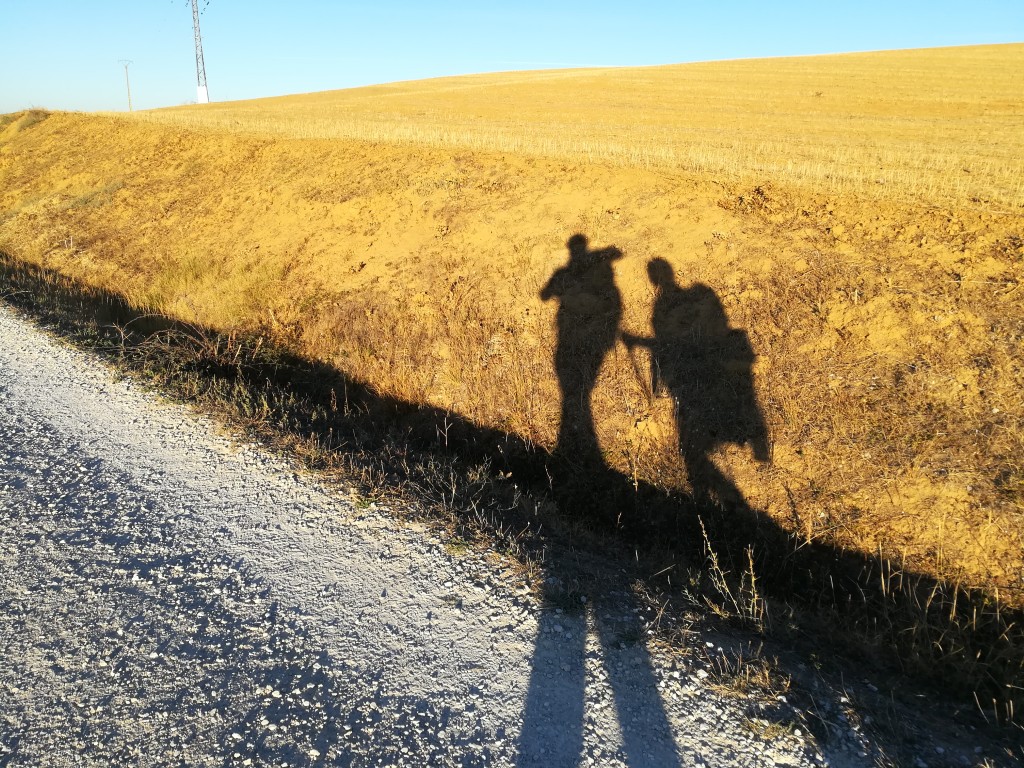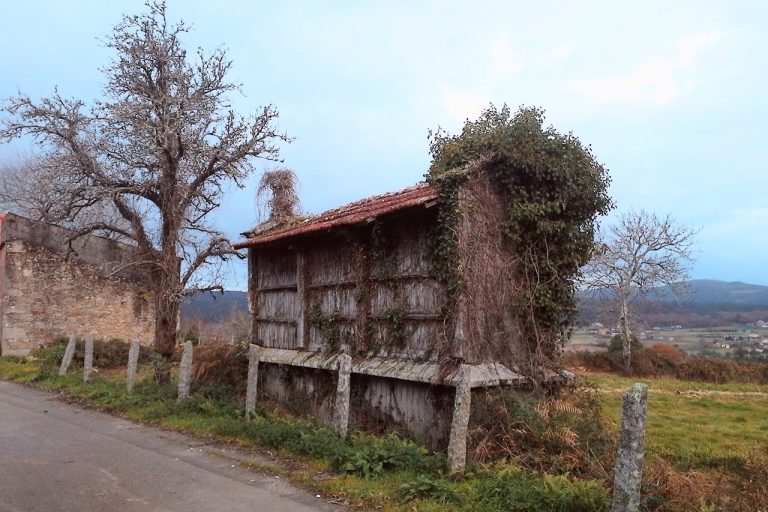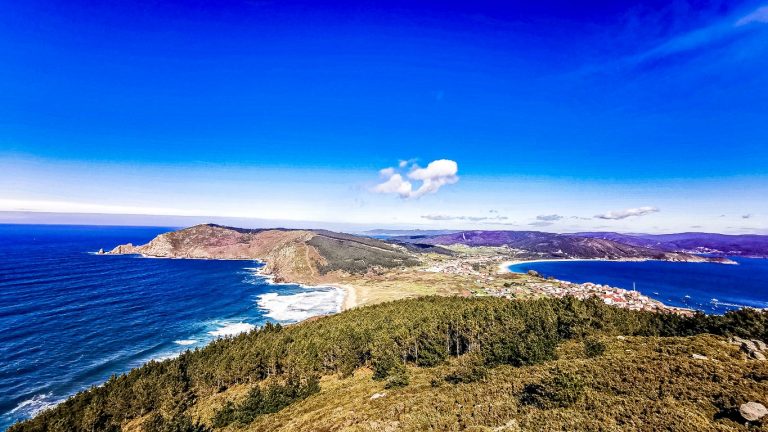
A New Stage Day – Introduction & Mood
The morning begins in Sahagún, the old Benedictine center, where the towers of San Lorenzo and San Tirso bid farewell to the pilgrims. After the bustle of the town, the wide plain of León opens once again: fields, small groves of poplars, and the straight line of the Camino leading you outward. This stage is shorter and almost entirely flat, ideal for regaining strength.
Today you follow the path of the old Roman roads and monks, past small places closely connected to the history of the monastery of Sahagún. A day that offers calm, but also many traces of spirituality and rural tradition.
Route & Elevation Profile
- Distance: 17.8 km
- Elevation gain/loss: +100 m / –90 m
- Difficulty: easy
- Character: Flat Meseta stage with long straight paths shaded by rows of trees. Small villages for refreshment, otherwise much open terrain.





Variants & Notes
- Vía Trajana (via Calzadilla de los Hermanillos): From Calzada del Coto the old Roman road, the “Vía Trajana,” leads to Calzadilla de los Hermanillos and later rejoins at Mansilla de las Mulas. More solitary, historic, but with few villages.
- Camino Real Francés (via Bercianos): The main route with a shaded avenue and pilgrim infrastructure, leading to El Burgo Ranero.
- Mobility: Easy to walk, no particular difficulties.
- Cyclists: Very comfortable to ride.
Description of the Way – With All Senses
From Sahagún, the Camino leads over the Puente Canto across the Río Cea. Here begins the plain of León, and you walk out through fields and beneath the green of poplar groves. After about 5 kilometers you reach Calzada del Coto, once called “Villa Zacarías” and closely linked to the monastery of Sahagún. Here the church of San Esteban recalls this tradition.
From here the Camino splits: those who wish may follow the Vía Trajana, but the main route continues straight through fields and tree-lined avenues to Bercianos del Real Camino. The town received its name because in the 10th century it was resettled with people from the Bierzo. Worth seeing are the church of El Salvador and the Ermita de la Virgen de Perales, which to this day protects pilgrims.
Beyond Bercianos the path continues along a long track lined with plane trees – 7 kilometers of quiet monotony. Small water points and rest areas bring some variety. Finally, you reach El Burgo Ranero, a village that developed around the Camino and whose name possibly goes back to “ranarius” (place of frogs or water sources). The church of San Pedro and the Ermita Santo Cristo de la Vera Cruz welcome pilgrims before they settle into their albergues.
Intermediate Villages & Special Features
| Place | Distance from Start | Special feature | Tip |
| Calzada del Coto | 5.2 km | Church of San Esteban, Ermita San Roque, junction of Vía Trajana | Donativo albergue |
| Bercianos del Real Camino | 11.4 km | Resettled by people from Bierzo, church of El Salvador, Ermita Virgen de Perales | Casa Rectoral albergue (Donativo) – especially authentic |
| El Burgo Ranero | 17.8 km | Church of San Pedro, Ermita Santo Cristo de la Vera Cruz | Traditional village structure on the Camino |
Packing & Shopping Tips
- From Sahagún supermarkets, afterwards supplies only in Calzada del Coto and Bercianos.
- Take water and small snacks – on the long straight stretches there are no spontaneous opportunities.
- Sun protection remains essential, even if the tree avenue occasionally provides shade.
Food, Accommodation & Supplies
- Sahagún: Wide selection of albergues (municipal, Santa Cruz, Dormero, Viatoris).
- Calzada del Coto: Small donativo albergue.
- Bercianos del Real Camino: Several albergues, including the well-known Casa Rectoral (Donativo), Albergue Bercianos 1900, La Perala.
- El Burgo Ranero: Traditional Albergue Doménico Laffi (Donativo), Albergue La Laguna, further accommodations.
Today’s Special Features
This stage is significant less for its length than for its historical and spiritual traces. Shortly after Sahagún you reach Calzada del Coto, whose name goes back to the Roman “Calzada.” The town once belonged to the monastery of Sahagún, and to this day one feels the connection between spiritual heritage and rural tradition.
The Vía Trajana, a variant from Calzada del Coto, follows the traces of the Roman road that connected Tarragona with Astorga. It is lonelier, stonier, and requires more effort, but it gives pilgrims the experience of an almost original silence. Those who follow it experience another dimension of the Camino – less comfort, but pure history.
The main route remains on the Camino Real Francés, through Bercianos to El Burgo Ranero. Here too history is alive: Bercianos was donated to the monastery of Sahagún in 966 by Doña Palla. Later it was resettled with people from the Bierzo. The church of El Salvador and the Ermita Virgen de Perales recall this dense connection between pilgrimage route, church, and community.
And finally the destination: El Burgo Ranero, a village that literally grew up around the Camino. The name points to water sources and wetlands, which were already important for survival in the past. Here ends a day in which history and landscape flow together – Roman roads, monastic history, medieval resettlement, and the quiet presence of the Camino itself.
Reflection at the End of the Stage
When you sit in El Burgo Ranero in the evening and the sun sets over the lagoons, you feel that even this short stage was more than just a connecting stage. It is a bridge: between Palencia and León, between the Vía Trajana and the Camino Real, between Roman heritage and living village life. Here the Camino reveals itself as a network of paths that has carried pilgrims for centuries.
📊 Tabular Overview
| Stage | Start | Goal | Distance | Elevation gain/loss | Difficulty | Intermediate places |
| 19 | Sahagún | El Burgo Ranero | 17.8 km | +100 / –90 m | easy | Calzada del Coto, Bercianos |
🌌 Camino of the Stars – Stage 19
Sahagún → Calzada del Coto → Bercianos del Real Camino → El Burgo Ranero
Have you ever tried the Vía Trajana? Share your experiences – whether historical solitude or the familiar Camino Real, each choice tells its own story.


